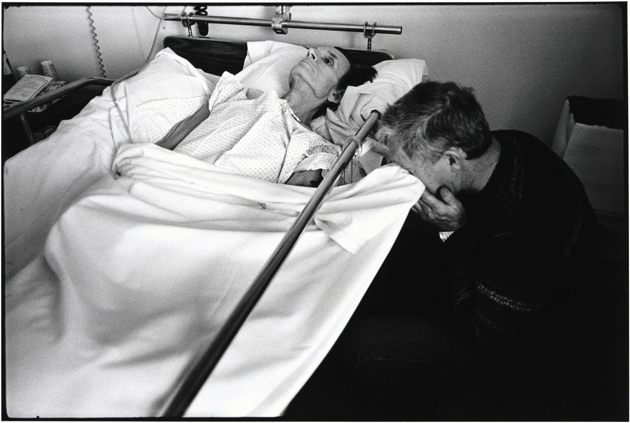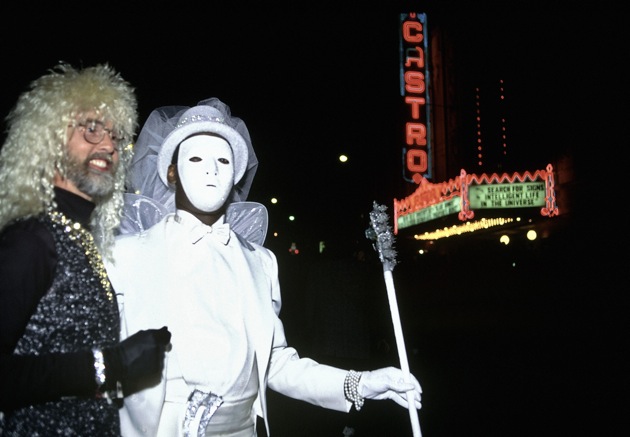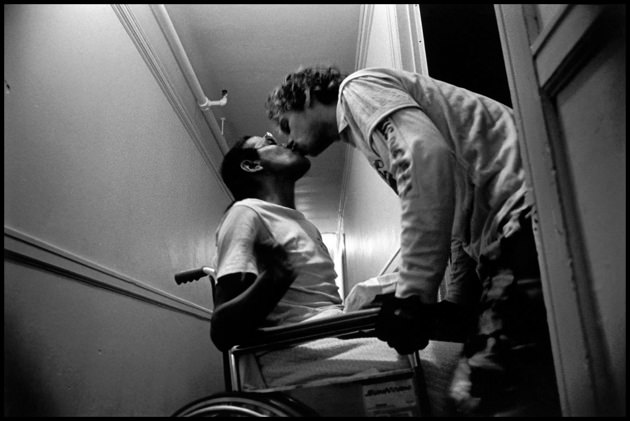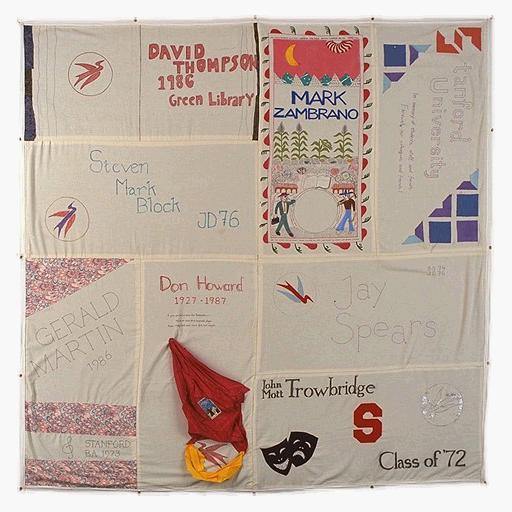It is difficult now to call up the particular mood that prevailed in the AIDS epidemic’s early years. I am not talking about the first rumblings, when no one knew enough to be afraid, but further in. In those post-AZT, pre-ARV-drug days, there was very little one could do if infected. Primitive prophylaxes against certain diseases offered one’s best bet but certainly no guarantee that one wouldn’t die of Kaposi’s sarcoma or cytomegalovirus or pneumocystis carinii pneumonia. The idea of life without AIDS, much less of being alive in thirty years, was almost unimaginable. Which is why in the late eighties, coworkers and I at the San Francisco AIDS Foundation came up with an idea to get people—gay men, in particular—thinking about the future. We decided to create a time capsule. But it would not contain kitschy souvenirs—gadgets and record albums and the like. Instead, the AIDS Time Capsule would house answers to a simple question:
What message would you send to people 50 years from now about your experiences during the epidemic?
In June of 1990, we set up a booth at the San Francisco Gay and Lesbian Pride Parade. Crowds cheered marchers nearby on Market Street, yet the mood was somber within our humid vinyl tent. Whenever I looked up from our table, arrayed with pencils and paper, I saw a steady flow of men waiting patiently in a line that did not shorten until the parade ended and the fog rolled in. Single men, couples, and groups of friends, pumped-up, sun-burned, half-undressed, young men propped on canes and leather-daddies in wheelchairs: all waiting to send a note to the future.
I left the AIDS Foundation well over a dozen years ago, and I moved from San Francisco to New York two years back. I have no idea whether the AIDS Time Capsule has survived safely someplace; our idea of a “capsule” was a taped-up cardboard box. Fortunately, however, before we packed up the more than 500 messages, I made Xerox copies of a number of them. I have carried them with me since, a time capsule of a time capsule. On the occasion of the 30th anniversary of AIDS on June 5, I pulled them out for the first time in two decades and took a look at them.
Words sputtered from the first page in a tangled, cursive script:
This is one fucking hellish experience.
You are very lucky to be born after the plague is over.
The next was written in meticulously printed letters:
When you hear about an epidemic or even a little mention of something strange happening, act immediately. Don’t wait for authorities.
Another sheet was simply covered with tiny, pencil-drawn tears.
The handwriting often revealed as much as the words themselves: hurried scrawls, nearly illegible, filled with childlike misspellings; words underlined, once, twice, three times, until the paper tore; tiny graphite explosions where snapped pencils-points gave the fifth exclamation mark more urgency. Some rambling messages completely filled the page. Others, drifting calmly, dead center, were short and bittersweet.
My heart was broken when my boyfriend died—I will never recover.
The very idea of a time capsule was dreamed up by some unmerited genius at the Westinghouse Corporation. Conceived as a promotional spectacle for the 1939 New York World’s Fair, the first time capsule shared exhibition space in an elaborate, omega-shaped building with the Singing Tower of Light and the Fair’s star attraction, a giant performing robot named Elektro. Shaped, without irony, like a torpedo, the sleek, 7-1/2-foot-long bomb-shell bore peaceful greetings from “present-day America to the people of Earth of 6939 A.D.” Copper-bound, glass-lined, and nitrogen-filled, designed to survive war or natural disaster, it was enshrined 50 feet underground in a mysterious place called The Immortal Well. It remains there to this day, scarcely noticed, in Flushing Meadows. As it turns out, beneath all its whiz-bang trappings, the contents of the World’s Fair time capsule were touchingly prosaic: newspapers, a newsreel (but no newsreel projector), and thousands of pages on microfilm. The text of everyday life—America, 1939—carefully set aside for future reading.
The AIDS Time Capsule continued this custom, it seems to me, one that’s linked in my imagination much farther back in history—to the messages found embedded in temple foundations in ancient Babylon. For in its purest conception, a time capsule need be no more complicated than words on paper: evidence of a life, saved. It requires only the unshakable faith that the people of Earth will continue without you and the belief that at least one benevolent future being will discover and read it, wishing simply to know: What was your life like then?
Advertisement
I moved from Seattle to the Castro, as if to another country, in July of 1985, right at the time when Rock Hudson died and every newspaper was filled with stories about the deadly virus. I was 24. I had come out to my family about a year before, though I’d been sexually active since I was a teenager. When I told my father I was moving to San Francisco, “ground zero” in the epidemic, he said he thought I might as well commit suicide. But I was ecstatic to be at the center of it all, living in a ratty flat off Diamond Street with four roommates, three cats, and a spectacular view of the city.
If I’m alive 50 years from now, I was careful. If I’m dead, no regrets, only sorrow.
It was not illness or exposure to HIV I feared most at the time, but the disappearance of men I did not know. Someone I would see often at the gym or on the bus, or a man I would purposefully look for at The Stud, returning week after week and hoping to meet him, was suddenly missing. Of course, he could have moved, received a job transfer, or joined a new gym. He could have been hit by a bus, I would remind myself. But I learned quickly that the lottery-logic spun to answer such questions in most people’s lives held little currency there. It was as if Oscar Wilde’s aphorism—“It’s an odd thing, but anyone who disappears is said to be in San Francisco”— had been updated and darkly inverted.
Terribly familiar with the strange new illness, some men I knew seemed able to sense it from blocks away, like changing weather—even in the earliest stages, when only the new HIV antibody test provided proof. It was “that look,” they called it, nothing more. Their intuition fascinated me, until I shared it. After a couple of years and a couple of friends’ deaths, I acquired this skill, too.
AIDS has changed my life forever. It is hard to think of that time when AIDS will not be a big hole where my friends were.
It was the predictability of the plot line, not the disappearing characters, that gradually became most frightening. Every time one story abruptly ended, another instantly started—on a loop. I remember that my friend, Peter, had just died when I visited another friend, Jeff, to bring him some food. He had just been released from the hospital. In pain from persistent headaches and weakened by diarrhea, Jeff had staged a suicide attempt in his doctor’s waiting room so that he would be admitted to the hospital on-the-spot, without several hours’ delay. “I took just enough to faint—only pills,” Jeff had explained to me. “You have to take more—and alcohol—to do it all the way.” He knew what he was talking about: He, like many gay men at the time, was a member of the Hemlock Society, which advises people about suicide.
Now he was staying with Stuart, who had what was called ARC at the time (AIDS-related complex), and was in the sixth week of a hunger strike to protest the meager federal AIDS funding. This was the winter of 1986. Opening the front door to their apartment was like cracking open an oven turned to 450 degrees. I immediately began unpeeling layers of clothing. Stuart was propped on the couch, wrapped in a sleeping bag, shivering, between two plump older men. With his blonde hair, emaciated face, and wire-rim glasses, he looked like a medicated Pilgrim. The room was lit by a collection of seven or eight electric space heaters that crackled, hissed, and wheezed, bursting on and off, and cast a warm orange glow on the floor. It was as though I had wandered into a weird underworld chapel. No one spoke a word. The only thing on the wall was a giant calendar, marking Stuart’s countdown, covered with X’s. The door had disappeared behind me in the darkness.
Standing there, I felt for one delirious moment the final terror of illness: horribly, inescapably trapped, just like Jeff and Stuart—trapped in life, in a body unready to die, and desperate to jump out of it. I thought, If I join the other two men quietly waiting their turn on the couch, if I make myself at home here, I will never leave this apartment. I found my way to the kitchen, placed the food in the empty refrigerator, then looked in on Jeff, who was sleeping. The last image I have of him alive is in that dim, hothouse bedroom. In spite of the heat, he was sprawled diagonally atop the bed, face down, wearing a hat, gloves, and a winter coat, as if he had fallen in knee-high snow and couldn’t get himself up again.
Advertisement
A couple days later someone found him dragging a bucket of water and a space heater around the apartment, searching for an electric socket. Jeff had to go back into the hospital, where he was forced to participate in group therapy and undergo a battery of psychiatric tests. The doctors could not find anything wrong with him. He stopped talking after several days in the ward, I was told. I remember thinking, I’m not surprised: he is ready to die, and he doesn’t want to talk about it to anyone—whether doctor, social worker, or friend—anymore. I interpreted his silence as a noble surrender. It wasn’t until an autopsy was performed that doctors discovered lesions on Jeff’s brain, due to AIDS, which caused his loss of speech and dementia.
Loss, loss, loss…. The pain of loss, the relief of the unscathed, the loneliness of being the survivors.
Faces of the dead surfaced weekly in the Bay Area Reporter, a local gay newspaper that published obituaries with photos of men who had recently died. Picking up a copy, I would instinctively open first to this section; it filled two pages or more. I always recognized someone I had known, danced, slept, or worked out with, aware that, in a barely different narrative, one of the pictures could have been my own.
For awhile, I saved the obituaries and other evidence of, and ephemera from, the epidemic: ACT UP meeting agendas; a Polaroid photo, passed among friends, of KS symptoms; a flyer that simply said, “Imagine a Cure”; a gay-paper personals ad that proposed, “Will Trade AZT for Seconal.” As an HIV-negative gay man, I suppose I felt a sense of duty to be an archivist for my community. Yet when I fell in love with a man who was HIV-positive, I threw the yellowing papers away. Keeping up with every treatment-of-the-month seemed a daunting task, and the fattening files in our bedroom only served to remind me of the burgeoning death tolls, upon which I was determined not to dwell. This was 1989. The world-wide pandemic was more than a news story now. It was in my house, in Steve’s body, in our life.
I won’t be afraid of infecting my lover, who is HIV-negative, or of becoming a burden should I get ill.
One night I dreamed that Steve and I were knocking at a friend’s door. He answered.
“Hello,” I said tentatively, unsure what tone to strike. “So, we heard that you are well. That you don’t have it anymore.”
“Yeah,” he replied calmly. “Now I’m just trying to live without it.” We all laughed nervously.
“Well, what did you do?” Steve asked. “What did you take? Who’s your doctor?”
He started to answer, but someone called to him from within the house. “Sorry, I’ll be back in a minute,” he promised. “Wait here.”
Steve and I waited and waited. The friend never returned.
Our waking life often had the quality of that dream: we stood together, supported each other, sure that the answer would come, but skeptical, too, tired of waiting.
That it did actually come one day—in the form of protease inhibitors; and for Steve, in the nick of time—never failed to seem miraculous. True, after four or five years, by which point Steve had regained his lost health—his T-cells steady and “viral load” now undetectable—we, like so many with access to these drugs, breathed more easily. But there was never a sense of complacency, of forgetting. How could there be? For his part, Steve had to take the pills on a strict schedule every day, had to switch medications from time to time, cope with side effects, get blood work regularly, and so on. For mine, I was always acutely aware that, with one unsafe slip or accident, I could find myself on a drug cocktail, too.
Before Steve, I had never pictured myself in a relationship. Lovers, sex, romance—yes—but to pair off with one person and make a life together? No. And then, because of AIDS, I never presumed that our relationship would last long enough to be truly “long-term.” What I got so unexpectedly, however, I also unexpectedly lost. One morning five years ago, I woke to a great thrashing, as if the San Andreas had finally given way; Steve, in bed beside me, was having a heart attack. I called for help, began CPR, EMTs came, they got him to the ER. But by then he was gone.
What it is to be happy will never be the same.
No one could quite explain it: a heart attack. He was just 43, in good shape physically; there was no family history of heart disease. The autopsy and toxicology reports revealed little. Now, finally, the answer I’ve long suspected has come: A study published in the Archives of Internal Medicine and picked up by news wires last week confirmed that infection with HIV increases the risk of a heart attack, perhaps because of the virus itself, perhaps as a result of antiretroviral drugs.
As I write this from my new home in New York, on the 30th anniversary of the first reported cases of AIDS, I see the world poised on a delicate threshold: We have achieved so much—scientists have made discoveries that would have been unthinkable when we made the AIDS Time Capsule, countless lives have been saved—and yet, the pandemic continues. In the developing world, in particular, efforts at prevention have failed to stem the tide of new infections. Every day, more than 7,000 people become infected. Which is not to say they’re all “over there.” Two months ago, a friend my age, 50, confided to me that he had recently sero-converted. He is going to be okay—he’s already on ARVs—but he was as ashamed and distressed as if not a day had passed since the 1980s.
I cannot help but wonder what those men and women waiting in that line to write notes to the future would say. Here we are, three decades in: No cure, no vaccine—yet—and no end in sight. Yes, treatment works, but there is never going to be enough money to support the cost for all who need it.
Have hope. Have faith.
Keep struggling and fighting for your dreams.
I return the handful of messages to the tattered manila envelope in which they had been stored, place it back in a cardboard box in my bedroom closet, and push the door closed. As I do so, I am reminded of some of the quieter voices inside the time capsule:
Look back in wonder.
Prepare for the next time.
Do not forget us.
Bill Hayes is the author of The Anatomist and other books.






